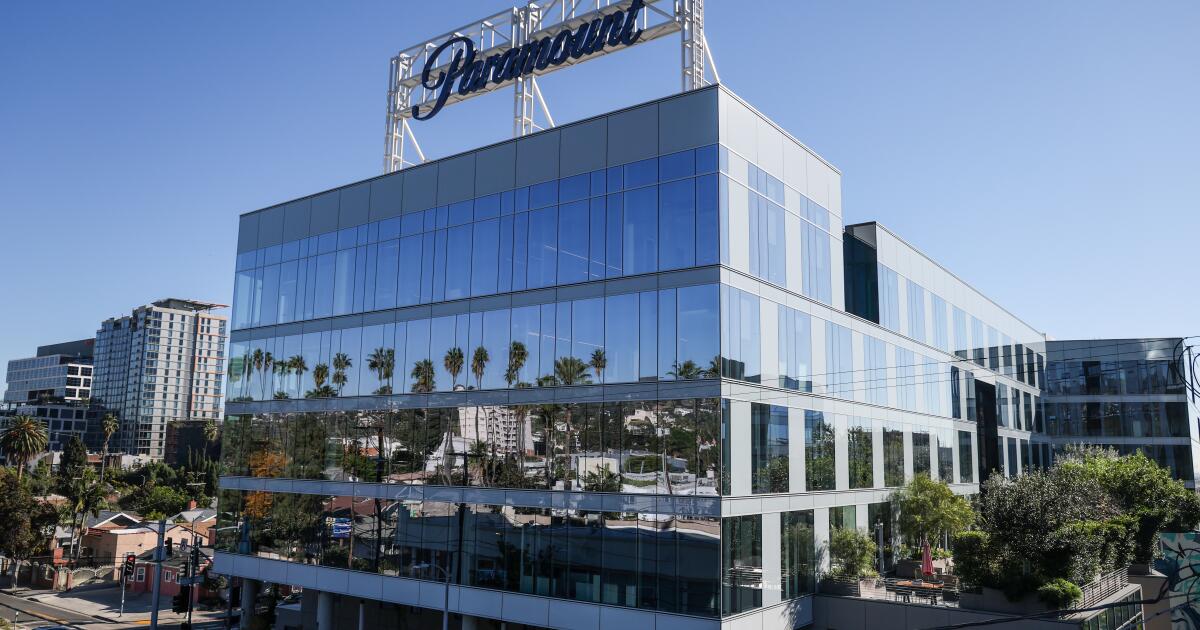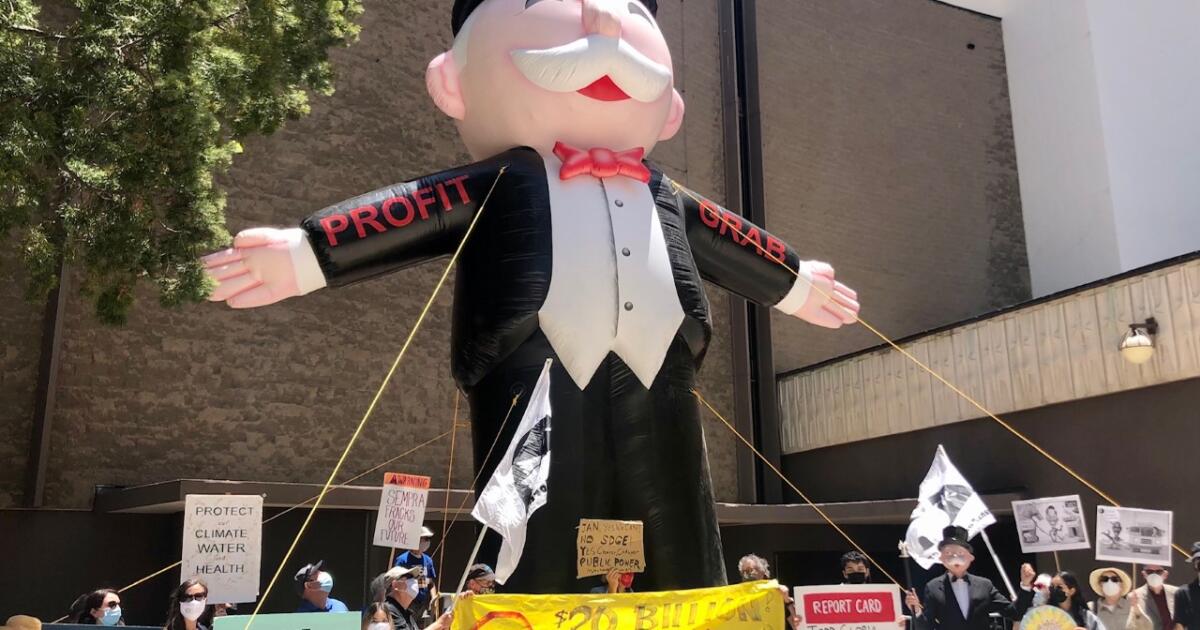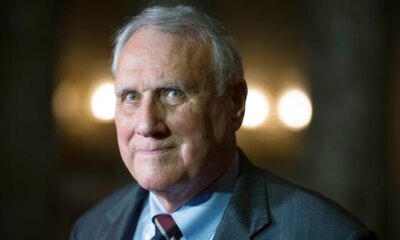Business
Money Talk: A parent had life insurance, but the companies are gone. What to do?

Dear Liz: My mother died last year. I discovered she had two old life insurance policies written by companies that no longer exist. How can I determine which modern insurance company is responsible for policies written by these old companies? How can I submit a claim? My mother was born in 1932. The first policy began 1939 for $350. The second began in 1943 for $600.
Answer: It’s not a given that a modern insurer still has these policies, but it’s possible. You can start by entering the old companies’ names in an internet search engine to see whether new owners are mentioned in the results. If that doesn’t work, contact the insurance department in the state where the old company was headquartered because it will have records of mergers or other changes.
If the company went bankrupt, you’ll need to consult the guaranty association in the state where your mother lived. State guaranty associations protect policyholders when an insurer defaults or becomes insolvent. The National Organization of Life and Health Insurance Guaranty Assns. has a search tool you can use to find the correct association.
Another option is to check the life insurance policy locator service offered by the National Assn. of Insurance Commissioners at https://eapps.naic.org/life-policy-locator/#/welcome. You’ll need to input your mother’s Social Security number as well as her dates of birth and death.
Also check the unclaimed property offices of any states where she lived. You’ll find links at unclaimed.org.
Beware the insurance salesperson in financial planner’s clothing
Dear Liz: Do you have any general advice for choosing a tax preparer? My financial advisor has recommended switching my 403(b) contributions over to Roth 403(b) with the same investment plan. I am worried that this could put us at risk for a higher tax bracket currently.
Answer: Ideally, a financial advisor wouldn’t recommend switching to a Roth option without knowing a fair amount about your current and future tax situations. Otherwise, the advisor wouldn’t be qualified to determine whether giving up the current tax break is likely to pay off later.
Unfortunately, not all financial advisors are truly qualified to give the advice they do. Some, particularly those advising people about 403(b) investments, are insurance salespeople rather than fiduciary financial planners.
You can get referrals to tax pros from the National Assn. of Enrolled Agents and your state’s chapter of certified public accountants. (The American Institute of CPAs has compiled a list of those at its website.) Both enrolled agents and CPAs are fiduciaries who promise to put your best interests first.
For broader financial advice, consider getting referrals from one of the organizations representing fee-only fiduciary planners such as the Garrett Planning Network, the XY Planning Network, the National Assn. of Personal Financial Advisors and the Alliance of Comprehensive Planners.
Also, teachers should consider spending some time on the nonprofit 403bwise website, which grades school districts’ retirement plans and seeks to educate teachers about the costs of trusting the wrong people.
After her husband died, a widow’s credit limit plummeted
Dear Liz: You’ve mentioned how important it is for spouses to each have credit cards on which they are the primary account holder. My husband died last year. We had a credit card with statements that showed the charges we each had made on our separately numbered credit cards. I found the account was in his name only. I had to get a new credit card in my own name, and the credit limit dropped from $75,000 to $7,000. Hope this warns others.
Answer: It bears repeating that most credit cards these days are not joint accounts. If two of you are using a card, one is probably the primary account holder and the other the authorized user.
After a primary account holder dies, credit card companies are often willing to work with surviving spouses who were authorized users to establish new accounts. But as you experienced, the credit limits for these new accounts may be much lower than those of the original.
Liz Weston, Certified Financial Planner®, is a personal finance columnist. Questions may be sent to her at 3940 Laurel Canyon, No. 238, Studio City, CA 91604, or by using the “Contact” form at asklizweston.com.

Business
Warner nixes Paramount’s bid (again), citing proposed debt load

Paramount’s campaign to acquire Warner Bros. Discovery was dealt another blow Wednesday after Warner’s board rejected a revised bid from the company.
The board cited the enormous debt load that Paramount would need to finance its proposed $108-billion takeover.
Warner’s board this week unanimously voted against Paramount’s most recent hostile offer — despite tech billionaire Larry Ellison agreeing in late December to personally guarantee the equity portion of Paramount’s bid. Members were not swayed, concluding the bid backed by Ellison and Middle Eastern royal families was not in the best interest of the company or its shareholders.
Warner’s board pointed to its signed agreement with Netflix, saying the streaming giant’s offer to buy the Warner studios and HBO was solid.
The move marked the sixth time Warner’s board has said no to Paramount since Ellison’s son, Paramount Chief Executive David Ellison, first expressed interest in buying the larger entertainment company in September.
In a Wednesday letter to investors, Warner board members wrote that Paramount Skydance has a market value of $14 billion. However, the firm is “attempting an acquisition requiring $94.65 billion of [debt and equity] financing, nearly seven times its total market capitalization.”
The structure of Paramount’s proposal was akin to a leveraged buyout, Warner said, adding that if Paramount was to pull it off, the deal would rank as the largest leveraged buyout in U.S. history.
“The extraordinary amount of debt financing as well as other terms of the PSKY offer heighten the risk of failure to close, particularly when compared to the certainty of the Netflix merger,” the Warner board said, reiterating a stance that its shareholders should stick to its preferred alternative to sell much of the company to Netflix.
The move puts pressure on Paramount to shore up its financing or boost its cash offer above $30 a share.
However, raising its bid without increasing the equity component would only add to the amount of debt that Paramount would need to buy HBO, CNN, TBS, Animal Planet and the Burbank-based Warner Bros. movie and television studios.
Paramount representatives were not immediately available for comment.
“There is still a path for Paramount to outbid Netflix with a substantially higher bid, but it will require an overhaul of their current bid,” Lightshed Partners media analyst Rich Greenfield wrote in a Wednesday note to investors. Paramount would need “a dramatic increase in the cash invested from the Ellison family and/or their friends and financing partners.”
Warner Bros. Discovery’s shares held steady around $28.55. Paramount Skydance ticked down less than 1% to $12.44.
Netflix has fallen 17% to about $90 a share since early December, when it submitted its winning bid.
The jostling comes a month after Warner’s board unanimously agreed to sell much of the company to Netflix for $72 billion. The Warner board on Wednesday reaffirmed its support for the Netflix deal, which would hand a treasured Hollywood collection, including HBO, DC Comics and the Warner Bros. film studio, to the streaming giant. Netflix has offered $27.75 a share.
“By joining forces, we will offer audiences even more of the series and films they love — at home and in theaters — expand opportunities for creators, and help foster a dynamic, competitive, and thriving entertainment industry,” Netflix co-Chief Executives Ted Sarandos and Greg Peters said in a joint statement Wednesday.
After Warner struck the deal with Netflix on Dec. 4, Paramount turned hostile — making its appeal directly to Warner shareholders.
Paramount has asked Warner investors to sell their shares to Paramount, setting a Jan. 21 deadline for the tender offer.
Warner again recommended its shareholders disregard Paramount’s overtures.
Warner Bros.’ sale comes amid widespread retrenchment in the entertainment industry and could lead to further industry downsizing.
The Ellison family acquired Paramount’s controlling stake in August and quickly set out to place big bets, including striking a $7.7-billion deal for UFC fights. The company, which owns the CBS network, also cut more than 2,000 jobs.
Warner Bros. Discovery was formed in 2022 following phone giant AT&T’s sale of the company, then known as WarnerMedia, to the smaller cable programming company, Discovery.
To finance that $43-billion acquisition, Discovery took on considerable debt. Its leadership, including Chief Executive David Zaslav, spent nearly three years cutting staff and pulling the plug on projects to pay down debt.
Paramount would need to take on even more debt — more than $60 billion — to buy all of Warner Bros. Discovery, Warner said.
Warner has argued that it would incur nearly $5 billion in costs if it were to terminate its Netflix deal. The amount includes a $2.8-billion breakup fee that Warner would have to fork over to Netflix. Paramount hasn’t agreed to cover that amount.
Warner also has groused that other terms in Paramount’s proposal were problematic, making it difficult to refinance some of its debt while the transaction was pending.
Warner leaders say their shareholders should see greater value if the company is able to move forward with its planned spinoff of its cable channels, including CNN, into a separate company called Discovery Global later this year. That step is needed to set the stage for the Netflix transaction because the streaming giant has agreed to buy only the Warner Bros. film and television studios, HBO and the HBO Max streaming platform.
However, this month’s debut of Versant, comprising CNBC, MS NOW and other former Comcast channels, has clouded that forecast. During its first three days of trading, Versant stock has fallen more than 20%.
Warner’s board rebuffed three Paramount proposals before the board opened the bidding to other companies in late October.
Board members also rejected Paramount’s Dec. 4 all-cash offer of $30 a share. Two weeks later, it dismissed Paramount’s initial hostile proposal.
At the time, Warner registered its displeasure over the lack of clarity around Larry Ellison’s financial commitment to Paramount’s bid. Days later, Ellison agreed to personally guarantee $40.4 billion in equity financing that Paramount needs.
David Ellison has complained that Warner Bros. Discovery has not fairly considered his company’s bid, which he maintains is a more lucrative deal than Warner’s proposed sale to Netflix. Some investors may agree with Ellison’s assessment, in part, due to concerns that government regulators could thwart the Netflix deal out of concerns about the Los Gatos firm’s increasing dominance.
“Both potential mergers could severely harm the viewing public, creative industry workers, journalists, movie theaters that depend on studio content, and their surrounding main-street businesses, too,” Matt Wood, general counsel for consumer group Free Press Action, testified Wednesday during a congressional committee hearing.
“We fear either deal would reduce competition in streaming and adjacent markets, with fewer choices for consumers and fewer opportunities for writers, actors, directors, and production technicians,” Wood said. “Jobs will be lost. Stories will go untold.”
Business
Billionaire tax proposal sparks soul-searching for Californians

The fiery debate about a proposed ballot measure to tax California’s billionaires has sparked some soul-searching across the state.
While the idea of a one-time tax on more than 200 people has a long way to go before getting onto the ballot and would need to be passed by voters in November, the tempest around it captures the zeitgeist of angst and anger at the core of California. Silicon Valley is minting new millionaires while millions of the state’s residents face the loss of healthcare coverage and struggle with inflation.
Supporters of the proposed billionaire tax say it is one of the few ways the state can provide healthcare for its most vulnerable. Opponents warn it would squash the innovation that has made the state rich and prompt an exodus of wealthy entrepreneurs from the state.
The controversial measure is already creating fractures among powerful Democrats who enjoy tremendous sway in California. Progressive icon Sen. Bernie Sanders (I-Vt.) quickly endorsed the billionaire tax, while Gov. Gavin Newsom denounced it .
The Golden State’s rich residents say they are tired of feeling targeted. Their success has not only created unimaginable wealth but also jobs and better lives for Californians, they say, yet they feel they are being punished.
“California politics forces together some of the richest areas of America with some of the poorest, often separated by just a freeway,” said Thad Kousser, a political science professor at UC San Diego. “The impulse to force those with extreme wealth to share their riches is only natural, but often runs into the reality of our anti-tax traditions as well as modern concerns about stifling entrepreneurship or driving job creation out of the state.”
The state budget in California is already largely dependent on income taxes paid by its highest earners. Because of that, revenues are prone to volatility, hinging on capital gains from investments, bonuses to executives and windfalls from new stock offerings, and are notoriously difficult for the state to predict.
The tax proposal would cost the state’s richest residents about $100 billion if a majority of voters support it on the November ballot.
Supporters say the revenue is needed to backfill the massive federal funding cuts to healthcare that President Trump signed this summer. The California Budget & Policy Center estimates that as many as 3.4 million Californians could lose Medi-Cal coverage, rural hospitals could shutter and other healthcare services would be slashed unless a new funding source is found.
On social media, some wealthy Californians who oppose the wealth tax faced off against Democratic politicians and labor unions.
An increasing number of companies and investors have decided it isn’t worth the hassle to be in the state and are taking their companies and their homes to other states with lower taxes and less regulation.
“I promise you this will be the final straw,” Jessie Powell, co-founder of the Bay Area-based crypto exchange platform Kraken, wrote on X. “Billionaires will take with them all of their spending, hobbies, philanthropy and jobs.”
Proponents of the proposed tax were granted permission to start gathering signatures Dec. 26 by California Secretary of State Shirley Weber.
The proposal would impose a one-time tax of up to 5% on taxpayers and trusts with assets, such as businesses, art and intellectual property, valued at more than $1 billion. There are some exclusions, including property.
They could pay the levy over five years. Ninety percent of the revenue would fund healthcare programs and the remaining 10% would be spent on food assistance and education programs.
To qualify for the November ballot, proponents of the proposal, led by the Service Employees International Union-United Healthcare Workers West, must gather the signatures of nearly 875,000 registered voters and submit them to county elections officials by June 24.
The union, which represents more than 120,000 healthcare workers, patients and healthcare consumers, has committed to spending $14 million on the measure so far and plans to start collecting signatures soon, said Suzanne Jimenez, the labor group’s chief of staff.
Without new funding, the state is facing “a collapse of our healthcare system here in California,” she said.
U.S. Rep. Ro Khanna (D-Fremont) speaks during a news conference at the U.S. Capitol on Nov. 18.
(Celal Gunes / Anadolu via Getty Images)
Rep. Ro Khanna (D-Fremont) spoke out in support of the tax.
“It’s a matter of values,” he said on X. “We believe billionaires can pay a modest wealth tax so working-class Californians have the Medicaid.”
The Trump administration did not respond to requests for comment.
The debate has become a lightning rod for national thought leaders looking to target California’s policies or the ultra-rich.
On Tuesday, Sanders endorsed the billionaire tax proposal and said he plans to call for a nationwide version.
“This is a model that should be emulated throughout the country, which is why I will soon be introducing a national wealth tax on billionaires,” Sanders said on X. “We can and should respect innovation, entrepreneurship and risk-taking, but we cannot respect the extraordinary level of greed, arrogance and irresponsibility that is currently being displayed by much of the billionaire class.”
But there isn’t unanimous support for the proposal among Democrats.
Notably, Newsom has consistently opposed state-based wealth taxes. He reiterated his opposition when asked about the proposed billionaires’ tax in early December.
“You can’t isolate yourself from the 49 others,” Newsom said at the New York Times DealBook Summit. “We’re in a competitive environment. People have this simple luxury, particularly people of that status, they already have two or three homes outside the state. It’s a simple issue. You’ve got to be pragmatic about it.”
Newsom has opposed state-based wealth taxes throughout his tenure.
In 2022, he opposed a ballot measure that would have subsidized the electric vehicle market by raising taxes on Californians who earn more than $2 million annually. The measure failed at the ballot box, with strategists on both sides of the issue saying Newsom’s vocal opposition to the effort was a critical factor.
The following year, he opposed legislation by a fellow Democrat to tax assets exceeding $50 million at 1% annually and taxpayers with a net worth greater than $1 billion at 1.5% annually. The bill was shelved before the legislature could vote on it.
The latest effort is also being opposed by a political action committee called “Stop the Squeeze,” which was seeded by a $100,000 donation from venture capitalist and longtime Newsom ally Ron Conway. Conservative taxpayer rights groups such as the Howard Jarvis Taxpayers Assn. and state Republicans are expected to campaign against the proposal.
The chances of the ballot measure passing in November are uncertain, given the potential for enormous spending on the campaign — unlike statewide and other candidate races, there is no limit on the amount of money donors can contribute to support or oppose a ballot measure.
“The backers of this proposed initiative to tax California billionaires would have their work cut out for them,” said Kousser at UC San Diego. “Despite the state’s national reputation as ‘Scandinavia by the Sea,’ there remains a strong anti-tax impulse among voters who often reject tax increases and are loath to kill the state’s golden goose of tech entrepreneurship.”
Additionally, as Newsom eyes a presidential bid in 2028, political experts question how the governor will position himself — opposing raising taxes but also not wanting to be viewed as responsible for large-scale healthcare cuts that would harm the most vulnerable Californians.
“It wouldn’t be surprising if they qualify the initiative. There’s enough money and enough pent-up anger on the left to get this on the ballot,” said Dan Schnur, a political communications professor who teaches at USC, Pepperdine and UC Berkeley.
“What happens once it qualifies is anybody’s guess,” he said.
Lorena Gonzalez, president of the California Federation of Labor Unions, called Newsom’s position “an Achilles heel” that could irk primary voters in places like the Midwest who are focused on economic inequality, inflation, affordability and the growing wealth gap.
“I think it’s going to be really hard for him to take a position that we shouldn’t tax the billionaires,” said Gonzalez, whose labor umbrella group will consider whether to endorse the proposed tax next year.

Peter Thiel speaks at the Cambridge Union in 2024.
(Nordin Catic / Getty Images for the Cambridge Union)
California billionaires who are residents of the state as of Jan. 1 would be impacted by the ballot measure if it passes . Prominent business leaders announced moves that appeared to be a strategy to avoid the levy at the end of 2025. On Dec. 31, PayPal co-founder Peter Thiel announced that his firm had opened a new office in Miami, the same day venture capitalist David Sacks said he was opening an office in Austin.
Wealth taxes are not unprecedented in the U.S. and versions exist in Switzerland and Spain, said Brian Galle, a taxation expert and law professor at UC Berkeley.
In California, the tax offers an efficient and practical way to pay for healthcare services without disrupting the economy, he said.
“A 1% annual tax on billionaires for five years would have essentially no meaningful impact on their economic behavior,” Galle said. “We’re funding a way of avoiding a real economic disaster with something that has very tiny impact.”
Palo Alto-based venture capitalist Chamath Palihapitiya disagrees. Billionaires whose wealth is often locked in company stakes and not liquid could go bankrupt, Palihapitiya wrote on X.
The tax, he posted, “will kill entrepreneurship in California.”
Business
Commentary: A leading roboticist punctures the hype about self-driving cars, AI chatbots and humanoid robots

It may come to your attention that we are inundated with technological hype. Self-driving cars, human-like robots and AI chatbots all have been the subject of sometimes outlandishly exaggerated predictions and promises.
So we should be thankful for Rodney Brooks, an Australian-born technologist who has made it one of his missions in life to deflate the hyperbole about these and other supposedly world-changing technologies offered by promoters, marketers and true believers.
As I’ve written before, Brooks is nothing like a Luddite. Quite the contrary: He was a co-founder of IRobot, the maker of the Roomba robotic vacuum cleaner, though he stepped down as the company’s chief technology officer in 2008 and left its board in 2011. He’s a co-founder and chief technology officer of RobustAI, which makes robots for factories and warehouses, and former director of computer science and artificial intelligence labs at Massachusetts Institute of Technology.
Having ideas is easy. Turning them into reality is hard. Turning them into being deployed at scale is even harder.
— Rodney Brooks
In 2018, Brooks published a post of dated predictions about the course of major technologies and promised to revisit them annually for 32 years, when he would be 95. He focused on technologies that were then — and still are — the cynosures of public discussion, including self-driving cars, human space travel, AI bots and humanoid robots.
“Having ideas is easy,” he wrote in that introductory post. “Turning them into reality is hard. Turning them into being deployed at scale is even harder.”
Brooks slotted his predictions into three pigeonholes: NIML, for “not in my lifetime,” NET, for “no earlier than” some specified date, and “by some [specified] date.”
On Jan. 1 he published his eighth annual predictions scorecard. He found that over the years “my predictions held up pretty well, though overall I was a little too optimistic.”
For example in 2018 he predicted “a robot that can provide physical assistance to the elderly over multiple tasks [e.g., getting into and out of bed, washing, using the toilet, etc.]” wouldn’t appear earlier than 2028; as of New Year’s Day, he writes, “no general purpose solution is in sight.”
The first “permanent” human colony on Mars would come no earlier than 2036, he wrote then, which he now calls “way too optimistic.” He now envisions a human landing on Mars no earlier than 2040, and the settlement no earlier than 2050.
A robot that seems “as intelligent, as attentive, and as faithful, as a dog” — no earlier than 2048, he conjectured in 2018. “This is so much harder than most people imagine it to be,” he writes now. “Many think we are already there; I say we are not at all there.” His verdict on a robot that has “any real idea about its own existence, or the existence of humans in the way that a 6-year-old understands humans” — “Not in my lifetime.”
Brooks points out that one way high-tech promoters finesse their exaggerated promises is through subtle redefinition. That has been the case with “self-driving cars,” he writes. Originally the term referred to “any sort of car that could operate without a driver on board, and without a remote driver offering control inputs … where no person needed to drive, but simply communicated to the car where it should take them.”
Waymo, the largest purveyor of self-driven transport, says on its website that its robotaxis are “the embodiment of fully autonomous technology that is always in control from pickup to destination.” Passengers “can sit in the back seat, relax, and enjoy the ride with the Waymo Driver getting them to their destination safely.”
Brooks challenges this claim. One hole in the fabric of full autonomy, he observes, became clear Dec. 20, when a power blackout blanketing San Francisco stranded much of Waymo’s robotaxi fleet on the streets. Waymos, which can read traffic lights, clogged intersections because traffic lights went dark.
The company later acknowledged its vehicles occasionally “require a confirmation check” from humans when they encounter blacked-out traffic signals or other confounding situations. The Dec. 20 blackout, Waymo said, “created a concentrated spike in these requests,” resulting in “a backlog that, in some cases, led to response delays contributing to congestion on already-overwhelmed streets.”
It’s also known that Waymo pays humans to physically deal with vehicles immobilized by — for example — a passenger’s failure to fully close a car door when exiting. They can be summoned via the third-party app Honk, which chiefly is used by tow truck operators to find stranded customers.
“Current generation Waymos need a lot of human help to operate as they do, from people in the remote operations center to intervene and provide human advice for when something goes wrong, to Honk gig workers scampering around the city,” Brooks observes.
Waymo told me its claim of “fully autonomous” operation is based on the fact that the onboard technology is always in control of its vehicles. In confusing situations the car will call on Waymo’s “fleet response” team of humans, asking them to choose which of several optional paths is the best one. “Control of the vehicle is always with the Waymo Driver” — that is, the onboard technology, spokesman Mark Lewis told me. “A human cannot tele-operate a Waymo vehicle.”
As a pioneering robot designer, Brooks is particularly skeptical about the tech industry’s fascination with humanoid robots. He writes from experience: In 1998 he was building humanoid robots with his graduate students at MIT. Back then he asserted that people would be naturally comfortable with “robots with humanoid form that act like humans; the interface is hardwired in our brains,” and that “humans and robots can cooperate on tasks in close quarters in ways heretofore imaginable only in science fiction.”
Since then it has become clear that general-purpose robots that look and act like humans are chimerical. In fact in many contexts they’re dangerous. Among the unsolved problems in robot design is that no one has created a robot with “human-like dexterity,” he writes. Robotics companies promoting their designs haven’t shown that their proposed products have “multi-fingered dexterity where humans can and do grasp things that are unseen, and grasp and simultaneously manipulate multiple small objects with one hand.”
Two-legged robots have a tendency to fall over and “need human intervention to get back up,” like tortoises fallen on their backs. Because they’re heavy and unstable, they are “currently unsafe for humans to be close to when they are walking.”
(Brooks doesn’t mention this, but even in the 1960s the creators of “The Jetsons” understood that domestic robots wouldn’t rely on legs — their robot maid, Rosie, tooled around their household on wheels, a perception that came as second nature to animators 60 years ago but seems to have been forgotten by today’s engineers.)
As Brooks observes, “even children aged 3 or 4 can navigate around cluttered houses without damaging them. … By age 4 they can open doors with door handles and mechanisms they have never seen before, and safely close those doors behind them. They can do this when they enter a particular house for the first time. They can wander around and up and down and find their way.
“But wait, you say, ‘I’ve seen them dance and somersault, and even bounce off walls.’ Yes, you have seen humanoid robot theater. “
Brooks’ experience with artificial intelligence gives him important insights into the shortcomings of today’s crop of large language models — that’s the technology underlying contemporary chatbots — what they can and can’t do, and why.
“The underlying mechanism for Large Language Models does not answer questions directly,” he writes. “Instead, it gives something that sounds like an answer to the question. That is very different from saying something that is accurate. What they have learned is not facts about the world but instead a probability distribution of what word is most likely to come next given the question and the words so far produced in response. Thus the results of using them, uncaged, is lots and lots of confabulations that sound like real things, whether they are or not.”
The solution is not to “train” LLM bots with more and more data, in the hope that eventually they will have databases large enough to make their fabrications unnecessary. Brooks thinks this is the wrong approach. The better option is to purpose-build LLMs to fulfill specific needs in specific fields. Bots specialized for software coding, for instance, or hardware design.
“We need guardrails around LLMs to make them useful, and that is where there will be lot of action over the next 10 years,” he writes. “They cannot be simply released into the wild as they come straight from training. … More training doesn’t make things better necessarily. Boxing things in does.”
Brooks’ all-encompassing theme is that we tend to overestimate what new technologies can do and underestimate how long it takes for any new technology to scale up to usefulness. The hardest problems are almost always the last ones to be solved; people tend to think that new technologies will continue to develop at the speed that they did in their earliest stages.
That’s why the march to full self-driving cars has stalled. It’s one thing to equip cars with lane-change warnings or cruise control that can adjust to the presence of a slower car in front; the road to Level 5 autonomy as defined by the Society of Automotive Engineers — in which the vehicle can drive itself in all conditions without a human ever required to take the wheel — may be decades away at least. No Level 5 vehicles are in general use today.
Believing the claims of technology promoters that one or another nirvana is just around the corner is a mug’s game. “It always takes longer than you think,” Brooks wrote in his original prediction post. “It just does.”
-

 News1 week ago
News1 week agoFor those who help the poor, 2025 goes down as a year of chaos
-

 Detroit, MI4 days ago
Detroit, MI4 days ago2 hospitalized after shooting on Lodge Freeway in Detroit
-
Georgia1 week ago
Best in Georgia: 2025 AJC Varsity high school football all-state teams
-

 Dallas, TX3 days ago
Dallas, TX3 days agoDefensive coordinator candidates who could improve Cowboys’ brutal secondary in 2026
-

 Detroit, MI1 week ago
Detroit, MI1 week agoWith 46k outages around Michigan, Metro Detroit prepares for power loss
-

 Southeast1 week ago
Southeast1 week agoMurder in small-town America: The crimes that tore quiet communities apart in 2025
-

 Movie Reviews1 week ago
Movie Reviews1 week ago‘Marty Supreme’ is Supreme Cinema – San Diego Jewish World
-

 Miami, FL1 week ago
Miami, FL1 week agoMiami-Dade sheriff’s deputy opens fire on vehicle after altercation during traffic stop, officials say
















